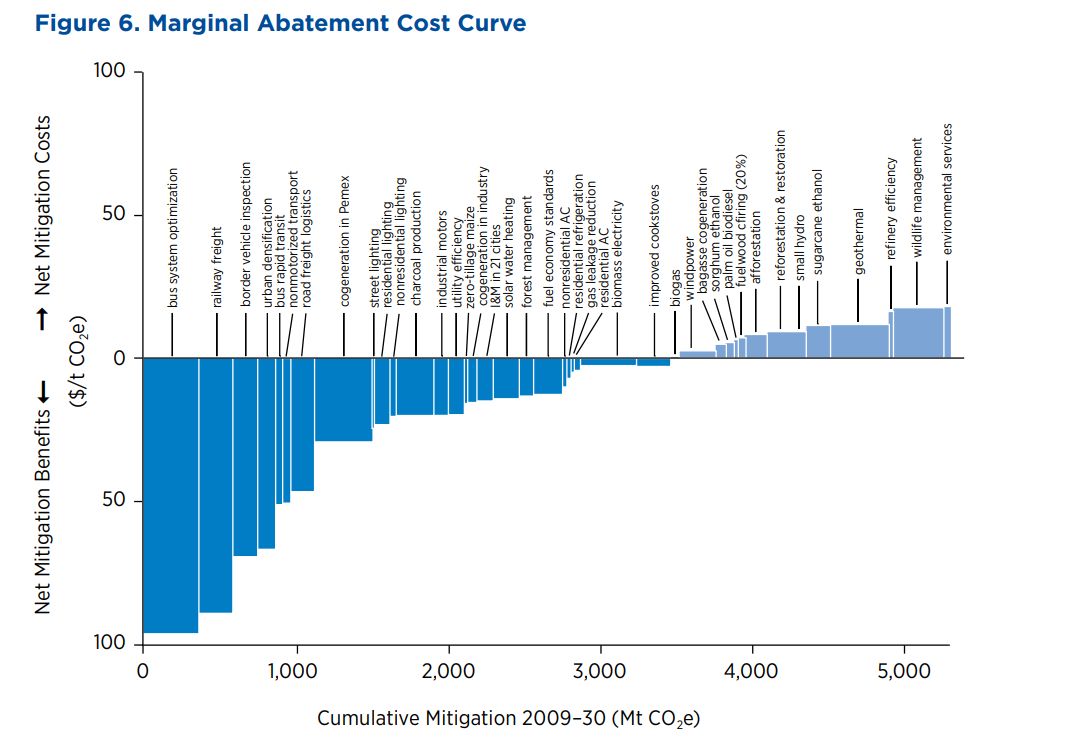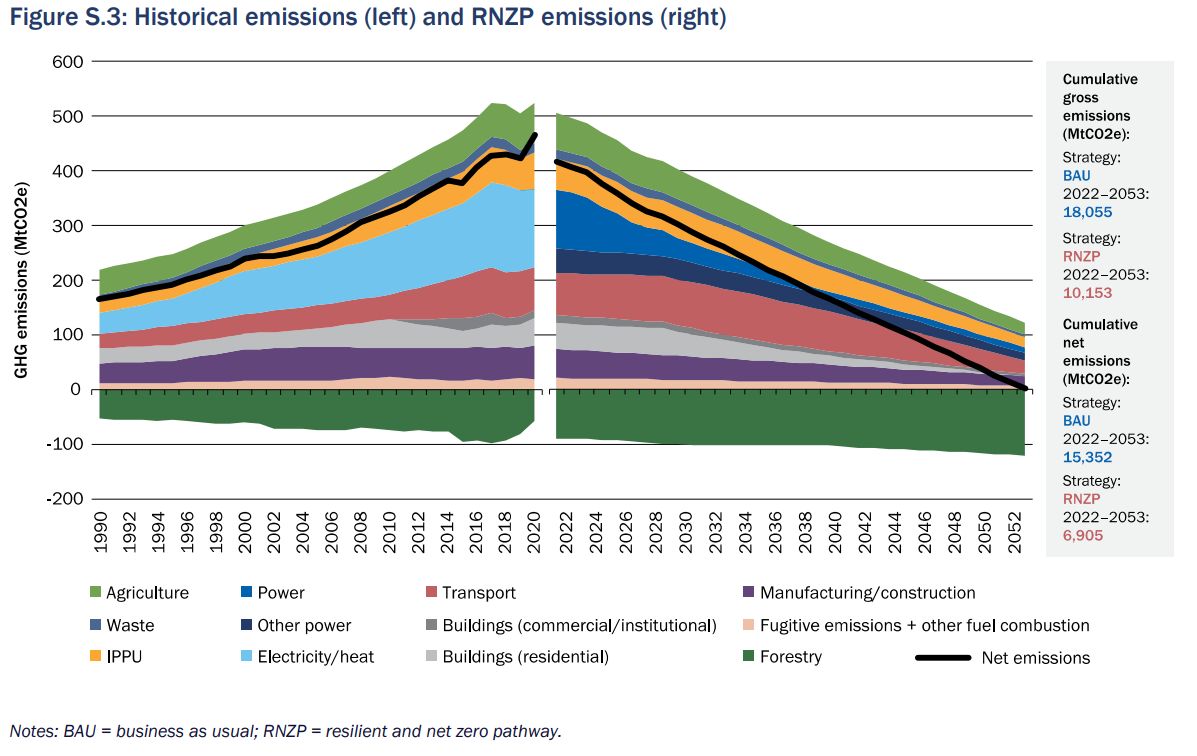Proper use of the abatement cost to steer the transition
The “abatement cost” has emerged as a key tool to steer the decarbonisation of the economy, to reduce its cost, and to assess the efficiency of a technology, an investment or a public policy. This tool nevertheless has numerous limitations, and must therefore be used with caution. Find out more in this I4CE interview with Stéphane Hallegatte, senior climate change advisor at the World Bank, who has published several academic articles on this subject.
Could you explain what is meant by an abatement cost and how it is used?
The abatement cost is simply the cost of an intervention that will reduce greenhouse gas emissions by one tonne. For example, an individual replacing a gas boiler with a heat pump will reduce their greenhouse gas emissions. But they will have to pay for the installation of the heat pump, will pay for the electricity needed to run it, and will save money by no longer purchasing gas. Divide the total additional cost (investment cost plus difference in operating costs) by the avoided emissions, and you have the abatement cost, in euros per tonne of carbon not emitted. This cost can be positive, but also negative (as is probably the case of the heat pump, since it is more energy-efficient).
To select priority climate actions, it makes sense to consider the abatement cost. After all, negative abatement costs correspond to opportunities to reduce emissions with a net economic gain. And the lowest abatement costs indicate opportunities to avoid emissions at low cost. If you have a budget of x million euros to reduce emissions, then choosing the lowest abatement costs will maximise emissions reductions.
This is how the famous marginal abatement cost curves were created. If you have 50 options to reduce emissions, each with their own cost and potential, you can rank them from the lowest to the highest cost. You can begin with the cheapest options, and do more and more until your financial budget is exhausted (if you have a budget), or until your reduction target is reached (if you have a target expressed in terms of emissions).

What are the limitations of this indicator?
It is essential to understand that this approach is fundamentally “marginal”. It was designed to reduce marginal emissions. If the goal was to slightly reduce emissions – say by 10% –, then it would be a perfectly appropriate tool. But the climate objective is to reduce emissions to almost zero in order to achieve carbon neutrality. In this case, this approach no longer meets the requirements and the abatement cost can lead us to select very inefficient options, especially marginal improvements that prevent us from radically changing our modes of production.
The reason is very simple: to reduce emissions by 10%, it makes sense to not implement the most expensive reductions and to concentrate on options with a negative or low cost. But to reduce emissions to almost zero, we cannot ignore hard-to-abate emissions: the challenge is no longer to identify low-cost opportunities, but to avoid all emissions at the lowest cost possible.
Road transport provides a good example. It is inexpensive to marginally improve petrol cars so as to reduce their emissions, and the cost per tonne avoided is low. But improving combustion cars does not help us to completely decarbonise transport, since a combustion engine car will always emit carbon dioxide. Instead, we need a more radical change that combines public transport, non-motorised transport and the electrification of cars and trucks. Even if the abatement cost of this strategy is higher for the first tonnes avoided (the marginal cost), it brings us closer to the objective of carbon neutrality and ensures a lower total abatement cost (to reduce emissions by 100%). Here, the fundamental difference is the objective: we are not seeking the most efficient way to reduce emissions by 10%, but a strategy to transform our economies and achieve carbon neutrality. This is not a marginal change, and it is therefore not surprising that a marginal approach is inappropriate.
Are there other reasons why the abatement cost approach does not work?
Yes, several.
First, because we can no longer consider each measure individually, since they interact with one another. Emissions reductions from a heat pump depend on the carbon content of electricity. And the cost of the decarbonisation of power generation depends on the evolution of demand for electricity (and its flexibility), and therefore on the number of heat pumps. So how do we choose between investing in reducing emissions from power generation and investing in heat pumps? The costs and reductions for each option depend on the implementation of the other option. We can no longer look at isolated investments, and must consider integrated strategies in which every sector plays a role.
Next, there is the issue of sequencing, or the rate of transition. We sometimes hear that we need to wait until electricity is sufficiently decarbonised before switching to electric vehicles. In a theoretical model, perhaps. But what about in practice? Should we wait until 2035 when electricity is zero-carbon, and replace all vehicles over a 10-year period? Would it not be more economically efficient to begin the transition towards electric vehicles earlier, and to make this transition over 30 years instead of 10? The abatement cost curves assume that the cost does not depend on the speed at which changes are made. But changing all vehicles over a 10-year period is obviously more expensive than doing so over 30 years. We therefore need to begin earlier in the most difficult sectors.
This is perhaps even more obvious in buildings: retrofitting all buildings has a high abatement cost, and we could therefore be tempted to begin doing so in 2040, for example. But we need to reach carbon neutrality by 2050, and retrofitting all buildings over a 10-year peiod is completely unrealistic. Even if the cost is higher than for other options, we cannot wait until 2040 to begin. In this case, what determines the most economically efficient sequencing is not the marginal cost for each individual building, but the cost for all buildings. Going too quickly is expensive, as there are not enough resources or qualified workers. Going too slowly is also expensive, as it means economies of scale cannot be achieved (for example in training). Knowing that buildings need to be renovated by 2050, the challenge is to determine the best strategy to do so at low cost. Comparing the costs per tonne in the building sector to the costs per tonne in the forestry sector (or any other sector) is pointless, since we know that the work will need to be done in all sectors. For a more technical discussion of these issues, see this blog post, or even this paper full of equations.
What about technologies?
This is the other dimension of the problem: the costs depend on the technologies available. However, in a deep transition in modes of production, technologies are not fixed, and they evolve with our investments. In 2007, when the first marginal abatement cost curves were published, solar photovoltaics and wind power were expensive per tonne avoided. The recommendation of these curves was therefore to avoid these technologies. But the investments made in these sectors, through relatively huge subsidies, have made these technologies more efficient, and they are now cheaper than all the other electricity production technologies in cost per kWh. We now have cheaper energy than ever before in our history, thanks to these investments that some economists described as a waste of money just a few years ago.
The issue today is identifying the other key technologies and ensuring the same conditions for success in the private sector. These probably include zero-carbon cement, carbon capture and sequestration in industry, zero-carbon steel, green hydrogen fertilisers, and a number of others. Here, the biggest challenge is the compromise between effectively supporting the development of these technologies and avoiding over-determining technological choices, in a context in which it is impossible to predict which technologies will ultimately prevail. Complete neutrality in the choice of the technologies that will benefit from public support is unrealistic, but preventing lobbies from successfully focusing support on their preferred technologies is no easy task for governments. Ending support for a disappointing technology is always difficult and politically sensitive.
Are there alternative indicators or approaches to the abatement cost to ensure the efficiency of the transition?
Marginal abatement cost curves were central to discussions in the 2000s, when climate policies concentrated on marginal changes. Today, we are focusing instead on long-term strategies, which take account of interactions between sectors and of technological changes, and seek to minimise the total cost of the transition, rather than concentrating on the marginal cost. A recent example, presented in figure 2, is the scenario developed in the Türkiye Country Climate and Development Report (CCDR)1.

These long-term strategies have several notable advantages.
First, they clarify the long-term objective and determine the efforts of each sector, taking account of their interactions, for example the electrification of transport and the decarbonisation of electricity. They help to coordinate decisions made by the different ministries or local authorities. And they give a long-term signal to private sector investors to foster the development of technologies and economies of scale. Next, their development is the opportunity for a joint process involving the public sector, the private sector and civil society. Once again, the goal is to build consensus and visibility for investors and policymakers, and also to take account of dimensions other than economic efficiency: a successful transition cannot simply minimise total costs: equity and effort sharing are also important.
Finally, it should be underlined that although marginal abatement costs are not useful in developing a decarbonisation strategy, this does not mean there is no need to ensure that our strategies are economically efficient. Defining strategies that minimise costs and are macro-economically feasible is more crucial than ever. But in order to define such strategies, we cannot simply select the options with the lowest marginal abatement costs. We need to implement integrated strategies, which are the only ones capable of organising – in all sectors simultaneously – an economic, technological and social transition towards carbon neutrality.
1 The CCDRs are new diagnostic reports that the World Bank Group prepares for all low – or middle – income countries, available on the World Bank website.